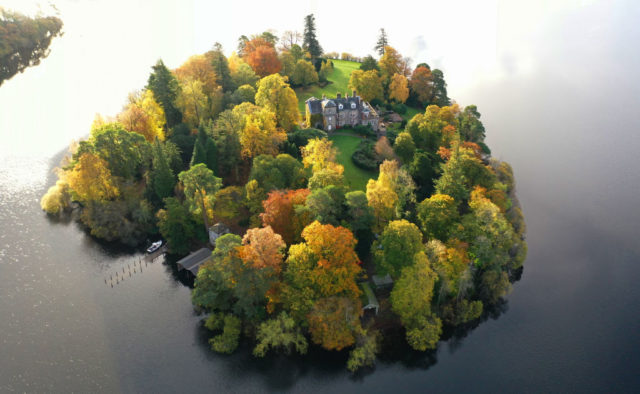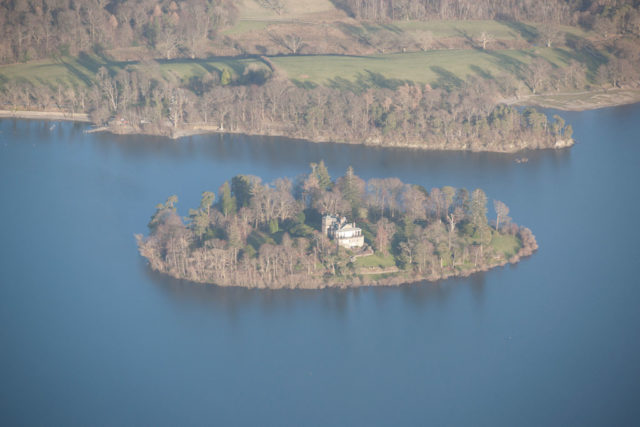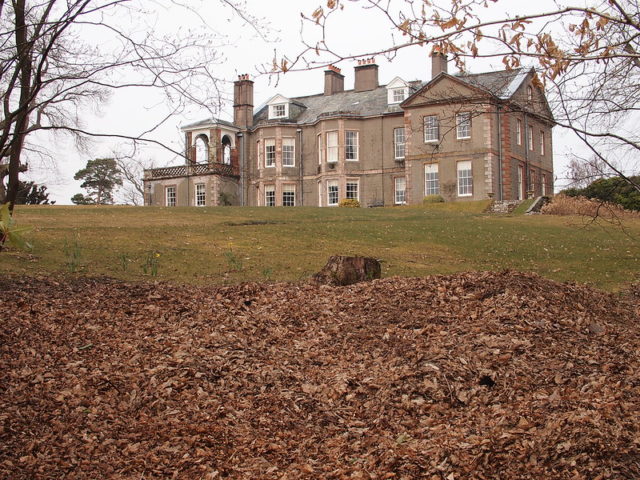Derwent Island House is a stately English manor that only accepts visitors five days a year
Welcome to Derwent Isle, a hidden gem nestled amidst the picturesque countryside of England. This serene and enchanting island is surrounded by majestic mountains and lush forests, creating a tranquil retreat that captivates the hearts of visitors worldwide. Derwent Isle House is at the heart of this idyllic island, a historical marvel that opens its doors to the public for a mere five days each year. Prepare to be enthralled as we embark on a journey through time, delving into the rich history, captivating stories, and abundant beauty of Derwent Isle House.

Derwent Isle’s history can be traced back to the pre-unified England era when it was initially owned by monks seeking solitude and spiritual refuge. These devout men recognized the island’s unique allure, which inspired them to establish a tranquil retreat away from the bustling world. As the centuries passed, the island transitioned through the annals of time, passing through the hands of various owners, each leaving their indelible mark upon its landscape.
One of the most captivating chapters in Derwent Isle’s history revolves around an eccentric nobleman named Joseph Pocklington. In the 18th century, Pocklington took ownership of the island and envisioned transforming it into an opulent paradise reflecting his extravagant tastes. He spared no expense in constructing a magnificent manor of the isle, exuding grandeur and luxury in every detail.

As fate would have it, the island’s transformation into a luxurious estate was met with disapproval from a renowned literary figure of the time, William Wordsworth. The acclaimed poet, famous for his romantic poetry and love for nature, opposed Pocklington’s ambitious project. Wordsworth expressed his disdain for the ostentatious display of wealth, believing it clashed with the island’s natural beauty and serenity.
Over the years, Derwent Isle changed hands several times, with each new owner leaving their unique imprint on the island and its manor. Despite shifting ownership, the essence of the island’s allure remained intact, captivating the hearts of those who set foot on its shores.

Recognizing the historical and cultural significance of Derwent Isle House, the National Trust stepped in to preserve this captivating landmark for future generations. In 1951, the Trust became the estate’s custodian, ensuring its rich history and architectural splendour would endure time.
Although privately owned, Derwent Isle House graciously opens its doors to the public for just five days each year. This rare opportunity offers visitors a chance to immerse themselves in the island’s past, explore its lavishly furnished interiors, and discover the fascinating stories within its walls.
Upon stepping inside Derwent Isle House, visitors are transported back in time, engulfed by the luxury and elegance that once graced its halls. Each room tells a unique tale of its inhabitants, and the meticulously preserved furnishings evoke a sense of nostalgia and wonder.

The architectural brilliance of Derwent Isle House is complemented by its meticulously landscaped gardens, creating a harmonious blend of artificial splendour and natural beauty. Strolling through the gardens is akin to stepping into a living painting, each season adding vibrant brushstrokes to the already captivating canvas.
Derwent Isle House is a testament to the timeless allure of history, art, and nature converging in perfect harmony. Though open for only a fleeting moment each year, its doors welcome curious souls to witness the grandeur of a bygone era.

Derwent Isle House is an enchanting retreat that beckons visitors to embrace its legacy, immerse themselves in its history, and revel in the natural splendour that surrounds it. This historical treasure, entrusted to the care of the National Trust, stands as a testament to the enduring beauty of England’s countryside and the stories woven into its tapestry. As you prepare to set foot on this magical island, be ready to step into a world of wonder where history, nature, and architecture converge to create an experience unlike any other.
Source: abandonedspaces